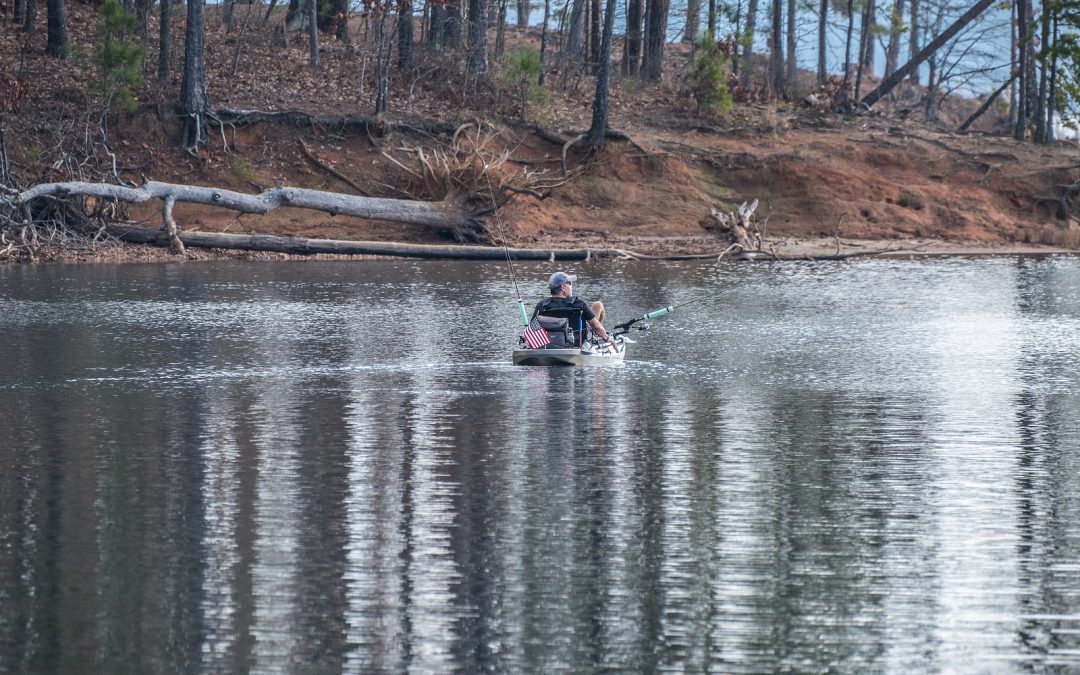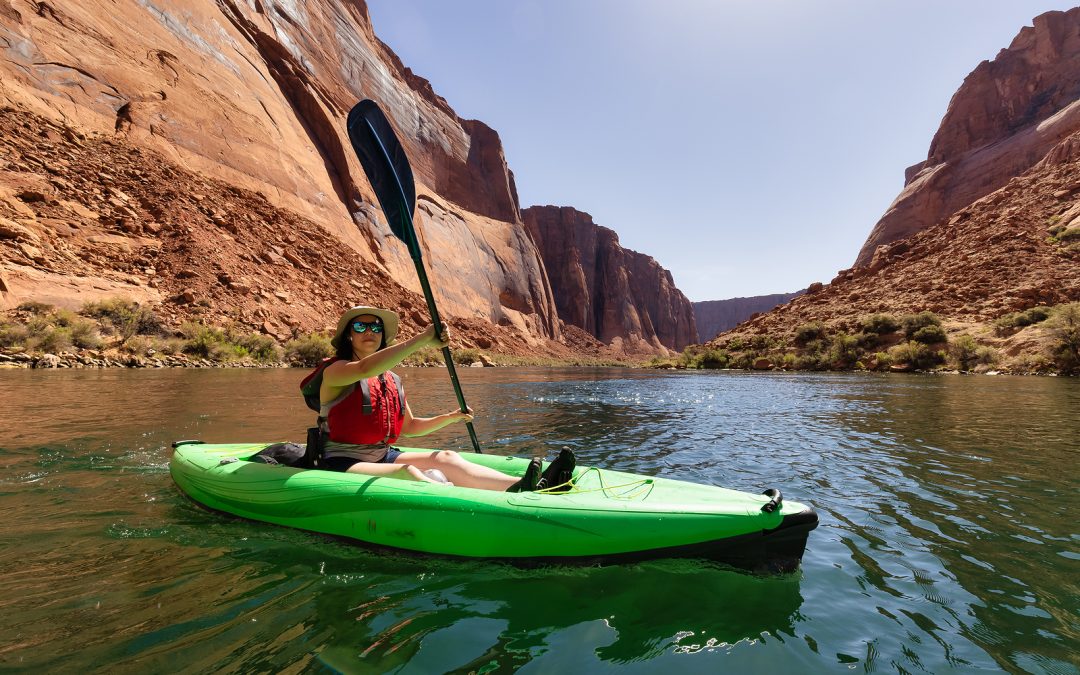Picking the right kayak as a beginner can be exciting and a bit overwhelming. There are many options to choose from, each with its own features and benefits.
The best kayak for beginners depends on several factors, including where you plan to paddle and your personal preferences.

For most beginners, a sit-on-top kayak like the Old Town Malibu 9.5 is a great choice. These kayaks are stable, easy to get in and out of, and work well in various water conditions.
They’re also versatile enough for different activities like fishing or casual paddling.
If you’re on a tight budget, an inflatable kayak can be a good option. They’re lightweight, easy to store, and can be surprisingly durable.
For those who want to paddle with a partner, a tandem kayak allows you to share the experience with a friend or family member.
Key Takeaways
- Sit-on-top kayaks offer stability and versatility for beginners
- Consider factors like budget, storage space, and intended use when choosing a kayak
- Safety equipment and basic paddling skills are essential for new kayakers
Choosing the Right Kayak
Picking the perfect kayak as a beginner involves understanding different kayak types, designs, and sizes.
Key factors to consider include kayak style, length, and width to match your needs and skill level.
Understanding Kayak Types
Recreational kayaks are ideal for beginners. They offer stability and ease of use on calm waters. These kayaks are wider and shorter, making them more stable and easier to maneuver.
Touring kayaks are longer and narrower. They’re designed for longer trips and can handle rougher waters. Beginners may find them less stable at first.
Inflatable kayaks are portable and easy to store. They’re great for occasional paddlers or those with limited storage space.
Fishing kayaks come with special features for anglers. They have rod holders and storage for gear. These kayaks are stable but may be heavier and harder to paddle.
Sit-On-Top vs. Sit-Inside Kayaks
Sit-on-top kayaks are popular with beginners. They’re easy to get in and out of, even in water. These kayaks are self-draining and don’t fill with water if capsized.
Sit-inside kayaks offer more protection from wind and water. They’re warmer in cold conditions. However, they can be trickier to exit if flipped over.
Sit-on-top kayaks are often recommended for new paddlers. They provide a sense of freedom and are less intimidating for first-timers.
Kayak Length and Width Considerations
Kayak length affects speed and maneuverability. Longer kayaks (12-16 feet) track straighter and are faster. Shorter kayaks (9-12 feet) turn more easily but are slower.
Width impacts stability and speed. Wider kayaks offer more stability but are slower. Narrower kayaks are faster but less stable.
For beginners, a kayak between 9-12 feet long and 28-34 inches wide is often a good choice. This size provides a balance of stability and maneuverability.
Recreational kayaks in these dimensions are easier to transport and store. They’re suitable for most calm water paddling situations.
Key Features for Beginners

When choosing a kayak as a beginner, certain features are crucial for a safe and enjoyable experience. These include stability, ease of transportation, and durability to withstand learning mishaps.
Stability and Tracking
Stability is paramount for new kayakers. Wide, flat-bottomed kayaks offer the best initial stability. They help prevent tipping and boost confidence on the water.
Good tracking keeps the kayak moving in a straight line. Longer kayaks generally track better. Some models include a skeg or rudder to improve tracking.
Beginners should look for kayaks with a width of 28-34 inches. This provides a good balance between stability and maneuverability.
Primary stability refers to how steady the kayak feels when sitting still. Secondary stability is how well it resists tipping when leaned to one side.
Weight and Portability
Lighter kayaks are easier to transport and maneuver. For beginners, a kayak weighing 35-50 pounds is ideal.
Inflatable kayaks can be a good option. They’re lightweight and easy to store. However, they may sacrifice some performance.
Look for kayaks with comfortable carrying handles. Some models feature wheel systems for easier transportation.
Consider where you’ll store your kayak. Shorter kayaks (9-12 feet) are easier to store in small spaces.
Durability and Material Selection
Polyethylene plastic is common in beginner kayaks. It’s affordable and durable, able to withstand impacts from rocks or docks.
ABS plastic offers better UV resistance but comes at a higher price. It’s less likely to fade or become brittle over time.
Fiberglass and composite materials are lightweight and perform well. However, they’re more expensive and can crack if mishandled.
Look for kayaks with reinforced bow and stern. These areas often take the most abuse during beach landings or collisions.
Paddling Locations and Conditions

Picking the right spot for kayaking is key for beginners. The water type and conditions affect how easy or hard it is to paddle. Let’s look at calm and moving water options.
Calm Waters: Lakes and Ponds
Lakes and ponds are great for new kayakers. These spots have still water, making it easier to learn basic skills. Recreational kayaks work well here. They’re stable and good for calm conditions.
Beginners should start on small lakes or ponds. Look for places with little wind and few boats. This helps you focus on paddling without distractions.
Some lakes have marked areas for kayaks. These keep you away from motorboats. Always check the weather before going out. Avoid days with high winds or storms.
Moving Water: Rivers and Streams
Rivers and streams offer more challenge. The water moves, so you need better control. Start with slow-moving rivers. Class I rapids are okay for beginners with some practice.
Look for wide, shallow rivers. These are safer and easier to navigate. Avoid narrow spots with fast currents. Choose the right kayak for river conditions. Touring kayaks work well on calm rivers.
Always check river levels before you go. High water can be dangerous. Wear a life jacket and bring safety gear. Tell someone where you’re going and when you’ll be back.
Essential Safety Equipment
Kayaking requires proper safety gear to protect paddlers on the water. Two key items are crucial for beginners to stay safe while enjoying their new hobby.
Personal Flotation Devices (PFDs)
PFDs are the most important piece of kayak safety equipment. They keep paddlers afloat if they fall in the water. Beginners should choose a Type III PFD designed for kayaking. These vests allow arm movement for paddling while providing buoyancy.
PFDs must fit snugly but not restrict breathing. Bright colors increase visibility on the water. Some features to look for:
- Adjustable straps
- Pockets for small items
- Reflective patches
- Whistle attachment
Paddlers should always wear their PFD, even in calm waters. It’s the law in many places and can save lives in emergencies.
Helmets and Safety Gear
Helmets protect kayakers from impacts with rocks, branches, or the boat itself. They’re essential for whitewater kayaking but also smart for beginners in any setting.
Key helmet features:
- Proper fit (snug but comfortable)
- Drainage holes
- Chin strap
Other important safety gear includes:
- Whistle for signaling
- Bilge pump to remove water from the kayak
- Paddle float for self-rescue
- First aid kit
Beginners should practice using safety gear before heading out. This builds confidence and prepares them for potential emergencies on the water.
Basic Paddling Skills and Techniques
Learning proper paddling techniques is crucial for new kayakers. The forward stroke is the most common and important skill to master.
To do this, reach out with your bottom hand and put the paddle in the water near your feet. Then, pull the kayak toward the paddle.
Another key skill is the sweep stroke, used for turning. To perform this, keep your upper arm high and bend your elbow at a 90-degree angle. Move the paddle in a wide arc from front to back.
The draw stroke helps move the kayak sideways. It’s useful for approaching docks or other kayaks. Put the paddle in the water perpendicular to the kayak and pull it towards you.
Proper grip is essential for efficient paddling. Hold the paddle with hands shoulder-width apart. The blades should be perpendicular to the water, not flat.
Beginners should practice these strokes in calm water before venturing out. It’s also helpful to take a basic kayaking course or get instruction from an experienced paddler.
Remember to maintain good posture while paddling. Sit up straight with feet braced against the foot pegs. This helps transfer power from your body to the paddle more effectively.
Maintenance and Storage Tips
Keeping your kayak in good shape is key for beginners. After each trip, rinse it with fresh water to remove salt, sand, and dirt. This helps prevent damage over time.
Dry your kayak completely before storage. Use a soft cloth to wipe it down, paying extra attention to crevices where water might collect.
Clean the foot peg rails regularly if your kayak has adjustable foot pegs. This keeps them working smoothly for your next outing.
Store your kayak properly to avoid warping or damage. The best way is to use padded wall hangers or specially designed kayak racks.
For sit-on-top kayaks, store them deck-side-down on padded supports. Place the supports about 30% of the kayak’s length from each end.
Avoid storing your kayak in direct sunlight. UV rays can fade and weaken the material over time.
Check your kayak regularly for scratches or damage. Small repairs early on can prevent bigger problems later.
Don’t forget about your paddle. Clean it after use and store it in a cool, dry place to keep it in top condition.
Choosing Paddles and Accessories
Picking the right paddle is crucial for beginner kayakers. A good paddle makes paddling easier and more enjoyable.
Paddle length matters. It depends on your height and the width of your kayak.
Most beginners do well with a paddle between 210-230 cm long.
Blade size and shape affect performance. Smaller blades are easier to use but less powerful. Larger blades provide more power but can be tiring.
Aluminum paddles are affordable and durable. They’re a good choice for beginners. Carbon fiber paddles are lighter but more expensive.
Two-piece paddles are convenient. They’re easy to transport and store.
The Carlisle Day Tripper is a popular two-piece paddle for beginners.
Essential accessories for new kayakers include:
- Life jacket (PFD)
- Dry bag for belongings
- Whistle for safety
- Bilge pump to remove water
- Paddle leash
A spray skirt keeps water out of sit-inside kayaks. It’s not needed for sit-on-top models.
Beginners should consider a paddle float for self-rescue practice. It helps re-enter the kayak if it tips over.
Remember to always wear a life jacket when kayaking. Safety should be the top priority for all paddlers.
Frequently Asked Questions

New kayakers often have concerns about safety, stability, and ease of use. Different kayak designs and features can greatly impact a beginner’s experience on the water.
What are the characteristics of a good beginner kayak?
A good beginner kayak is stable, durable, and easy to maneuver. It should have a wide beam for better balance and adjustable footrests for comfort.
The kayak should also offer decent storage space for gear. These features help new paddlers feel more confident and secure on the water.
Which is safer for a new kayaker, a sit-in or a sit-on-top kayak?
Both sit-in and sit-on-top kayaks can be safe for beginners. Sit-on-top kayaks are often easier to get in and out of, making them popular for new paddlers.
Sit-in kayaks, like the Wilderness Systems Pungo 120, can offer a mix of features. Some have large cockpits, giving paddlers the benefits of both styles.
What design aspects contribute to a kayak’s stability for new paddlers?
A wider hull is key for stability in beginner kayaks. This design provides a larger base on the water, making it harder to tip over.
Recreational kayaks often have this wider design, making them a good choice for new paddlers. The added width helps beginners feel more secure as they learn paddling techniques.
How does one choose a kayak that is easy to get in and out of?
Kayaks with large cockpit openings or sit-on-top designs are easiest to enter and exit. These styles allow for more freedom of movement.
For sit-in kayaks, look for models with spacious cockpits. Sit-on-top kayaks naturally offer easy access, as the paddler simply sits on top of the deck.
Can you recommend a sturdy and reliable kayak for an older beginner?
Older beginners may prefer kayaks with added stability and comfort features. Look for models with supportive seats and easy entry and exit.
Some kayaks offer extra width for stability without sacrificing maneuverability. These can be good options for older paddlers who want a balance of safety and performance.
What are the most reputable kayak brands for first-time kayakers?
Several brands are known for producing quality beginner kayaks. Old Town is a respected name in the industry, offering reliable options for new paddlers.
Other reputable brands include Wilderness Systems, Perception, and Ocean Kayak. These companies produce kayaks with features that cater to beginners’ needs.










